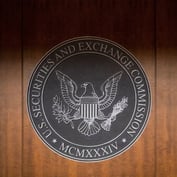What You Need to Know
- Regulators found fee-related deficiencies in most of the 130-plus exams conducted under its Advisory Fees Initiative.
- Errors included overbilling, double-billing and failing to properly calculate tiered fees.
- Examiners also found deficiencies related to incomplete or misleading Form ADV Part 2 brochures.
The Securities and Exchange Commission’s exam division released Wednesday a Risk Alert detailing deficiencies found in advisors’ fee calculations and fee-related compliance and disclosure issues.
The Risk Alert supplements an earlier Advisory Fees Risk Alert by providing greater detail on certain compliance issues observed during the exam division’s recent Advisory Fees Initiative exams.
Examiners conducted approximately 130 exams of SEC-registered investment advisors under the initiative and identified deficiencies related to the advisory fees charged during most of the exams.
The advisory fee-related deficiencies observed often resulted in financial harm to clients, including:
- advisory fee calculation errors, such as overbilling of advisory fees, inaccurate calculations of tiered or breakpoint fees, and inaccurate calculations due to incorrect householding of accounts;
- not crediting certain fees due to clients, such as prepaid fees for terminated accounts or pro-rated fees for onboarding clients.
SEC examiners also observed fee-related compliance and disclosure issues.









 November 10, 2021 at 01:51 PM
November 10, 2021 at 01:51 PM











